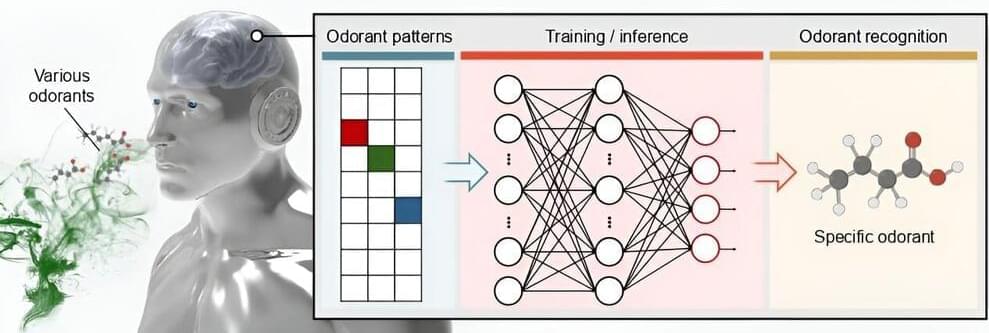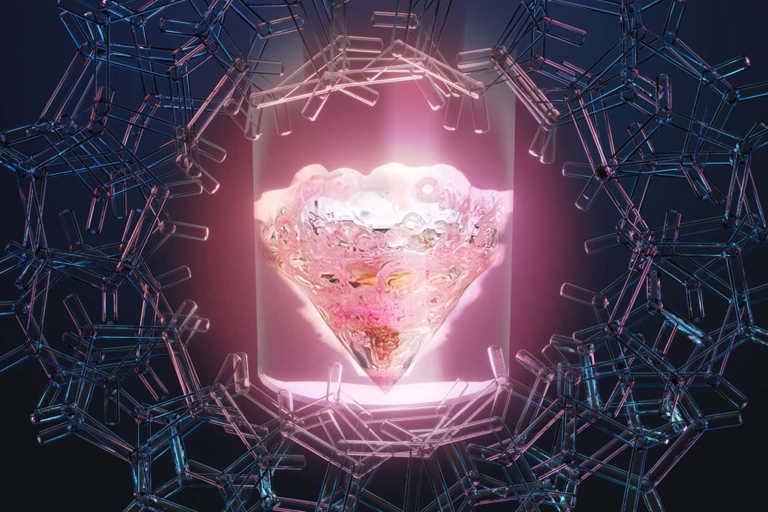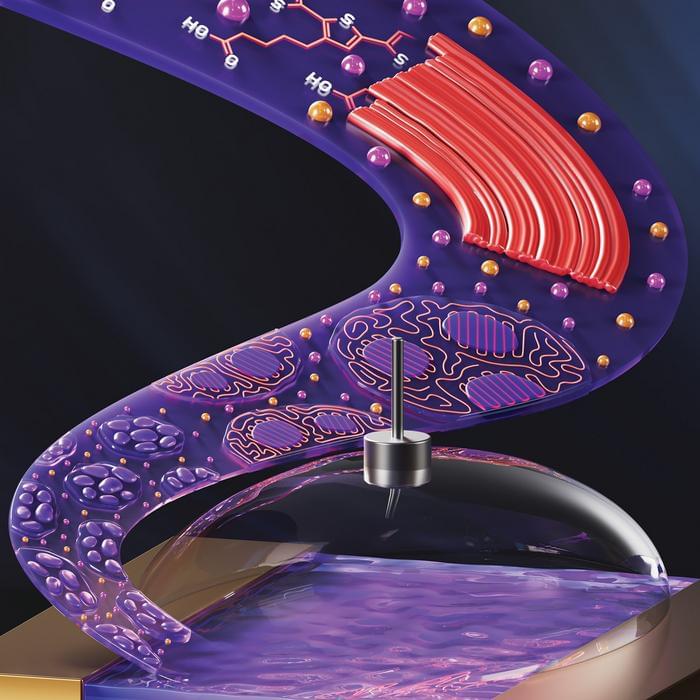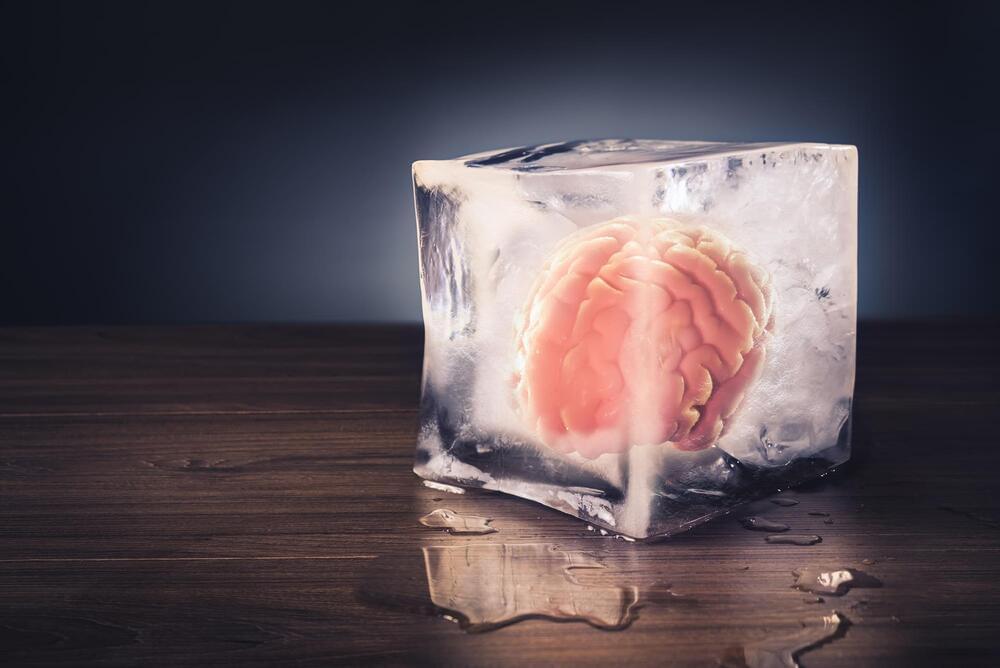A team of chemical and biological engineers at Seoul National University in the Republic of Korea has developed a proof-of-concept device that could one day lead to the creation of an artificial nose.


Scientists have made a significant breakthrough in understanding the properties of promethium, a rare earth element with elusive characteristics despite its use in modern technology.
Researchers have uncovered the properties of a rare earth element that was first discovered 80 years ago at the very same laboratory. Their discoveries open a new pathway for the exploration of elements critical in modern technology, from medicine to space travel.
Promethium was discovered in 1945 at Clinton Laboratories, now the Department of Energy’s Oak Ridge National Laboratory, and continues to be produced at ORNL in minute quantities. Some of its properties have remained elusive despite the rare earth element’s use in medical studies and long-lived nuclear batteries. It is named after the mythological Titan who delivered fire to humans and whose name symbolizes human striving.


While silicon has been the go-to material for sensor applications, could polymer be used as a suitable substitute since silicon has always lacked flexibility to be used in specific applications? This is what a recent grant from the National Science Foundation hopes to address, as Dr. Elsa Reichmanis of Lehigh University was recently awarded $550,000 to investigate how polymers could potentially be used as semiconductors for sensor applications, including Internet of Things, healthcare, and environmental applications.
Illustration of an organic electrochemical transistor that could be developed as a result of this research. (Credit: Illustration by by Ella Marushchenko; Courtesy of Reichmanis Research Group)
“We’ll be creating the polymers that could be the building blocks of future sensors,” said Dr. Reichmanis, who is an Anderson Chair in Chemical Engineering in the Department of Chemical and Biomolecular Engineering at Lehigh University. “The systems we’re looking at have the ability to interact with ions and transport ionic charges, and in the right environment, conduct electronic charges.”

If you zoom in on a chemical reaction to the quantum level, you’ll notice that particles behave like waves that can ripple and collide. Scientists have long sought to understand quantum coherence, the ability of particles to maintain phase relationships and exist in multiple states simultaneously; this is akin to all parts of a wave being synchronized. It has been an open question whether quantum coherence can persist through a chemical reaction where bonds dynamically break and form.
Now, for the first time, a team of Harvard scientists has demonstrated the survival of quantum coherence in a chemical reaction involving ultracold molecules. These findings highlight the potential of harnessing chemical reactions for future applications in quantum information science.
“I am extremely proud of our work investigating a very fundamental property of a chemical reaction where we really didn’t know what the result would be,” said senior co-author Kang-Kuen Ni, Theodore William Richards Professor of Chemistry and Professor of Physics. “It was really gratifying to do an experiment to find out what Mother Nature tells us.”

“The planet has a hot core, and that heat source is changing the chemistry of the gases deeper down, but it’s also driving this strong, convective mixing bubbling up from the interior,” said Zafar Rustamkulov.
Gas giant planets within our solar system and exoplanets outside our solar system are known to possess large amounts of gas and small cores, but what if an exoplanet was found to exhibit opposite characteristics? This is what a study published today in Nature hopes to address as a team of international researchers investigated the physical and atmospheric characteristics of WASP-107 b, which is located just over 200 light-years from Earth and has been found to have unique interior characteristics compared to previously discovered exoplanets. These unique findings hold the potential to challenge our understanding of the formation and evolution of gas giant exoplanets, which continue to demonstrate stark contrasts to planets within our solar system.
For the study, the researchers used NASA’s powerful James Webb Space Telescope (JWST) to observe WASP-107 b, discovering that while its radius is slightly less than Jupiter, its mass is only 10 percent of the largest planet in our solar system. Additionally, WASP-107 b possesses methane levels that are one thousand times less than what astronomers anticipated finding, along with having a core whose mass is 12 times larger than the Earth.

A recent United Nations report found that the world generated 137 billion pounds of electronic waste in 2022, an 82% increase from 2010. Yet less than a quarter of 2022’s e-waste was recycled. While many things impede a sustainable afterlife for electronics, one is that we don’t have systems at scale to recycle the printed circuit boards (PCBs) found in nearly all electronic devices.
PCBs — which house and interconnect chips, transistors and other components — typically consist of layers of thin glass fiber sheets coated in hard plastic and laminated together with copper. That plastic can’t easily be separated from the glass, so PCBs often pile up in landfills, where their chemicals can seep into the environment. Or they’re burned to extract their electronics’ valuable metals like gold and copper. This burning, often undertaken in developing nations, is wasteful and can be toxic — especially for those doing the work without proper protections.
A team led by researchers at the University of Washington developed a new PCB that performs on par with traditional materials and can be recycled repeatedly with negligible material loss. Researchers used a solvent that transforms a type of vitrimer — a cutting-edge class of sustainable polymers — to a jelly-like substance without damaging it, allowing the solid components to be plucked out for reuse or recycling.

In good news for future animation figureheads, there might be a new way to revive frozen brains without damaging them. Scientists in China have developed a new chemical concoction that lets brain tissue function again after being frozen.
Freezing is effective at keeping organic material from decomposing, but it still causes damage. As the water inside turns to ice, the crystals tear apart the cells. That’s why frozen meat or fruit goes a bit mushy after it’s defrosted – but a bigger problem is that it also happens with organs or tissues chilled for transplant or research.
For the new study, scientists at Fudan University in China experimented with various chemical compounds to see which ones might work to preserve living brain tissue during freezing. They started by testing out promising chemicals on brain organoids – small, lab-grown lumps of brain tissue that develop into different types of related cells.

Now, new research reveals yet another engineering feat of this ancient animal’s structure: its ability to filter feed using only the faint ambient currents of the ocean depths, no pumping required.
This discovery of natural ‘“zero energy” flow control by an international research team co-led by University of Rome Tor Vergata and NYU Tandon School of Engineering could help engineers design more efficient chemical reactors, air purification systems, heat exchangers, hydraulic systems, and aerodynamic surfaces.
In a study published in Physical Review Letters, the team found through extremely high-resolution computer simulations how the skeletal structure of the Venus flower basket sponge (Euplectella aspergillum) diverts very slow deep sea currents to flow upwards into its central body cavity, so it can feed on plankton and other marine detritus it filters out of the water.
